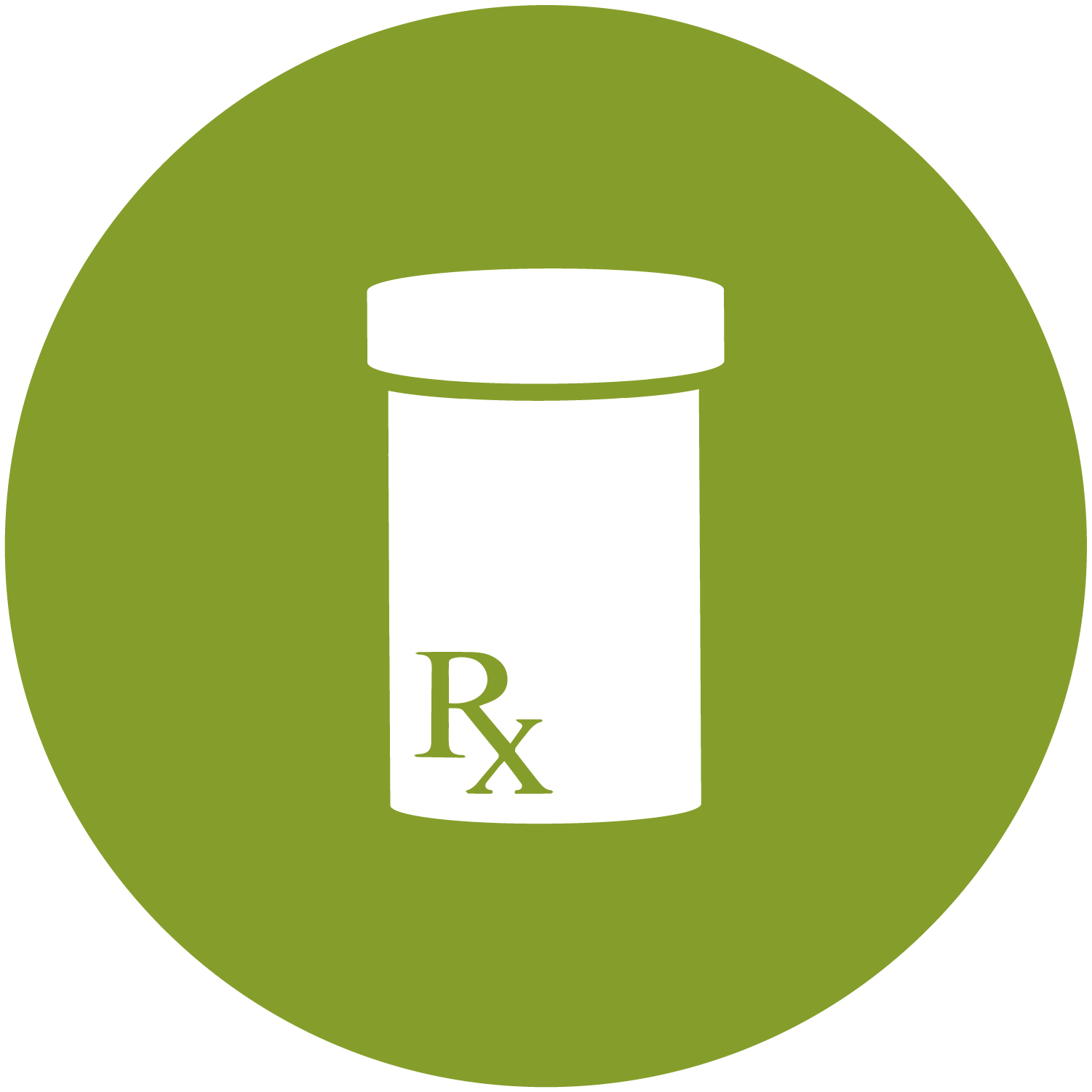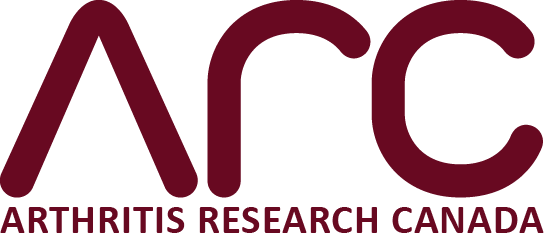In Lesson 1 of JointHealthTM Education: Advanced Therapies for Inflammatory Arthritis, you learned that the term “disease-modifying anti-rheumatic drugs” (DMARDs) is used to categorize certain medicines that suppress the disease process that causes the worsening of inflammatory arthritis such as rheumatoid arthritis, ankylosing spondylitis and psoriatic arthritis. They alter the natural course of the disease. DMARDs suppress the inflammation, slow joint damage, decrease autoantibody levels and have positive effects on long-term functional outcome. As discussed in Lesson 1, not all people respond successfully to the category of DMARDs known as csDMARDs. It is in these circumstances that the use of advanced therapies should be considered.
To help you with the advanced therapies conversation, Lesson 2 provides you with important information about the two “classes” of advanced therapies available today: biologics and targeted small molecule medications. The quiz is an interactive and printable PDF.

Key considerations for patients starting advanced therapies
When you and your rheumatologist agree that your disease is worsening (e.g. inflammation is not well controlled and other measures discussed in Lesson 1) and your DMARD(s) has stopped working, it may be time to discuss transitioning to an advanced therapy, such as a biologic or targeted small molecule medication. Patients should be able to make fully informed decisions about whether to start an advanced therapy. They should be able to assess treatment (or no treatment) risks against benefits, and have tools to enable them to discuss the pros and cons of all treatments with their healthcare team.
Biologics (originators and biosimilars)
Biologic response modifiers have transformed the lives of patients with inflammatory arthritis who need them. Today in North America, Europe and Asia, there are more biologics – originators and biosimilars – in use to treat inflammatory arthritis than in any other disease. Over the past 21 years,, biologics have become a life-saving treatment option for inflammatory arthritis patients whose disease does not respond to conventional synthetic disease-modifying anti-rheumatic drugs (csDMARDs).
Biologics are made from living organisms, such as living cells that have been modified using biotechnology. This allows these living organisms or cells to produce the active substance of the biological medicine. This active substance is then harvested from the cells. The active substance is commonly called a “protein.” Biologics made up of proteins are much larger and more complex in nature than conventional, small molecule medicines such as over-the- counter ibuprofen (e.g. Advil) or by-prescription methotrexate. Most often, patients take their biologic with methotrexate. However, some biologics are just as effective on their own.
When originator biologics lose their patents, biosimilar biologics (biosimilars) can enter the marketplace, much like a generic medicine does when a small molecule brand name drug loses its patent.
Biosimilars
A biosimilar is a biologic that has similar effectiveness, safety, immunogenicity profile and quality and delivers the same therapeutic benefits to patients as its originator biologic. They are typically prescribed to patients by a rheumatologist. For example:
- adalimumab (Amgevita®), adalimumab (Hadlima®), adalimumab (Hulio®), adalimumab (Hyrimoz®), and adalimumab (Idacio®) are biosimilar biologic versions of the originator biologic adalimumab (Humira®);
- etanercept (Brenzys®) and etanercept (Erelzi®) are biosimilar biologic versions of the originator biologic etanercept (Enbrel®);
- infliximab (Avsola®), infliximab (Inflectra®), infliximab (Remsima®), and infliximab (Renflexis®) are biosimilar biologic versions of the originator biologic infliximab (Remicade®);
- rituximab (Riabni®), rituximab (Riximyo®), rituximab (Ruxience®), and rituximab (Truxima®) are biosimilar biologic versions of the originator biologic rituximab (Rituxan®).
Due to the size, complexity and natural variability of biologic medications, and because biologic medications are made in living cells rather than with chemicals, a biosimilar and its originator biologic can be shown to be similar, but not identical.
For example, the way that etanercept is manufactured makes it impossible to produce an exact copy of the molecule. This differs from other medicines you may have taken before. Medications like methotrexate and ibuprofen are not proteins so when they are manufactured, exact copies can be made. These generic drugs are small molecules that are chemically synthesized and contain identical medicinal ingredients to their brand name reference products.
A biosimilar biologic enters the market after a originator biologic patent expires, just like a small molecule generic medication can do when the brand name medication’s patent expires. And just the way generic medications are much lower in price compared to their original versions, so too are biosimilars. For example, a generic aspirin such as acetaminophen is less expensive than brand name Tylenol, although they are identical in terms of quality, safety and effectiveness. While biosimilars cannot be identical to their brand name originators, the same concept applies.

Advantages and/or disadvantages of injection or infusion
Both routes of biologic administration – injection or infusion - are effective and safe. Generally, patients should consider when choosing that taking your biologic by injection takes less time (less than 15 minutes), is more convenient but you must administer more frequently (i.e. every few weeks versus every few months). Taking your medication by infusion takes longer but you will only need to visit a clinic roughly every 1-4 months.

Originator biologics or biosimilar biologics course of therapy
Biologics or biosimilars are normally prescribed for a year at a time, but an evaluation period takes place between three to six months to gauge how effective it is for each patient. This is usually a requirement of public and private drug plans, but also follows gold standard treatment guidelines. An assessment by your rheumatologist or prescribing health care provider early on in your course of treatment is very important.
If a patient’s disease state improves, the rheumatologist will talk about keeping the patient on the biologic in the long term until the patient’s inflammatory arthritis is under control. At that point, the patient and rheumatologist will talk about trying to reduce the medication dose and perhaps even stop taking the biologic. Approximately 50%-70% of inflammatory patients respond very quickly – within a few weeks – to their biologic.
Due to their specificity, if one biologic doesn’t work, another one may. Every patient responds differently to advanced therapies, for reasons not well understood. If a biologic is ineffective for you, transitioning to a different biologic or targeted small molecule medications is the next step as part of your treatment plan goal for remission. Patient and provider should be aiming to reduce inflammatory arthritis to the lowest activity level possible, allowing you to regain most or all of your quality of life.
Rheumatologists are generally comfortable transitioning from one biologic or targeted small molecule medication to another. You may hear about a “wash out” period during the transition (i.e. waiting for one medication to leave your system before starting another). Generally, research suggests that patients can start a new biologic or targeted small molecule medication when the next dose of their current biologic is due as long as there are no lingering safety concerns about the previous therapy/ies.
If a patient achieves remission, their rheumatologist will generally make sure the patient maintains remission-level symptoms for at least one year before thinking about reducing their medications. Patients often say that they know they have reached remission because it feels like “they have gotten their old life back”. A small number of patients who achieve remission may even be able to reduce or stop their medications for a period, but close monitoring is required if they do. If symptoms reappear – such as fatigue, morning stiffness that lasts more than 45 minutes after getting up, and or one or more swollen, stiff and painful joints – getting in to see their rheumatologist is vitally important before the disease becomes more active.
Common and rare side effects of biologics (originators or biosimilars)
The greatest risk while taking a biologic is infection. The likelihood of experiencing infection or any other side effects vary from person to person. Biologics make it harder for your body’s immune system to fight off infections. They may even make it harder for you to spot the early signs of infection.
Like for patients on a targeted small molecule medication (see below), if you take a biologic medication your rheumatologist will ask you to go for regular lab tests to monitor your blood and watch out for side effects, such as infections.
The most common but not serious side effects to watch for while on a biologic – and please note they vary by biologic type – include injection site reactions, increased risk of infection, skin rash, cough, trouble sleeping, respiratory infections, high blood pressure and others. Ask your rheumatologist for an information sheet on what to look for with your specific biologic.
The most serious but rare side effects to watch for – and please note they vary by biologic type – include serious infections, tuberculosis, liver abnormalities or problems, multiple sclerosis type symptoms, and an increased risk of bowel perforation.
Also, there are risks of interaction between biologics and medications being taken for other chronic diseases or illness, such as chronic respiratory conditions, diabetes, heart disease and stroke.
If you feel you are experiencing a significant side effect, contact your rheumatologist who will be able to assess whether it is the medication or another health issue.

tsDMARDs: Targeted synthetic DMARDs (“targeted small molecule medications”)
Because no two people with an inflammatory arthritis respond to the same medication in the same way—and many do not respond nearly well enough or at all—there is a need for more medications to treat this serious group of diseases. Research into treatment options has led to the introduction of a new advanced therapy called targeted synthetic DMARDS (tsDMARDs), or targeted small molecule medications.
These new advanced therapies come in pill form and work in a whole new way. They’re not biologics, which target inflammation from the outside of cells. Instead they prevent an inflammatory immune response from within cells by decreasing your immune system’s ability to make certain enzymes that can lead to RA symptoms.

Janus Kinase (JAK) inhibitors
One type of targeted small molecule medication is called Janus kinase (JAK) inhibitors, which specifically target JAK1 and JAK3 of the Janus family of kinases (enzymes) to interfere with the inflammatory process in rheumatoid arthritis and reduce pain, swelling and inflammation that leads to joint damage.
The first JAK inhibitor in Canada, tofacitinib (Xeljanz®), was Health Canada approved in 2014, and is used to treat RA in patients who cannot tolerate methotrexate and/or have failed other csDMARDs in combination. It can be taken in pill form, twice a day. Like biologics, many patients who go on JAK inhibitors respond well and may start to see an improvement in their symptoms in as little as two weeks.
Other JAK inhibitors approved for the treatment of inflammatory arthritis in Canada are baricitinib (Olumiant®) and upadacitinib (Rinvoq®).

Other targeted small molecule medications
Another pill form, small-molecule medication, apremilast (Otezla®), has been shown to reduce the signs and symptoms of psoriatic arthritis. Taken as one tablet twice a day, this medication works by inhibiting the action of phosphodiesterase-4 (PDE4). PDE4 is an enzyme found in immune cells.

Making the decision to start a targeted small molecule medication
As is the case for biologics, there are pros and cons to targeted small molecule medication treatment. The main difference between biologics and targeted small molecule medication is that studies show that targeted small molecule medications are as effective in many patients without methotrexate. Your rheumatologist may prescribe a targeted small molecule medication if you are unable to tolerate methotrexate or if you have taken methotrexate without any result. Your rheumatologist may even prescribe a targeted small molecule medication before you try a biologic if you both think it is the right medication for you.

Common and rare side effects of targeted small molecule medications
Like for patients on a biologics medication, if you take a targeted small molecule medication, your rheumatologist will ask you to go for regular lab tests to monitor your blood and watch out for side effects, such as infections.
The most common but not serious side effects to watch for include nausea, indigestion, diarrhea, headaches and upper respiratory tract infections (like colds and sore throats).
The most serious but rare side effects to watch for include serious infections, drop in red and white blood cell counts, liver abnormalities, increase risk of bowel perforation and may cause a decrease in kidney function.
If you feel you are experiencing a significant side effect, contact your rheumatologist who will be able to assess whether it is the medication or another health issue.

General (and gentle) reminders about side effects
While it is important to know that side effects may occur with any medication, it is even more important for you to know that joint damage, disability, and in the worst cases, premature death, will occur if inflammatory arthritis is not well controlled. Thus, the benefits of controlling it are considerable and lifelong.
Also, when looking through reference books on medication, keep in mind that these sources will list every side effect ever reported, even if it affected only a single patient worldwide. In fact, even a widely-used medication therapy such as acetaminophen (Tylenol® and others) may seem dangerous when one reads about it in such a book. Any medication can bring risk, but there is greater risk for the person with inflammatory arthritis when medications are needed and are avoided.
Watch the coaching video

Arthritis Consumer Experts
© 2000-2022 ACE Planning and Consulting Inc.

ACE thanks Arthritis Research Canada (ARC) for its scientific review of ACE and JointHealthTM information and programs.

Arthritis Consumer Experts
© 2000-2022 ACE Planning and Consulting Inc.

ACE thanks Arthritis Research Canada (ARC) for its scientific review of ACE and JointHealthTM information and programs.



